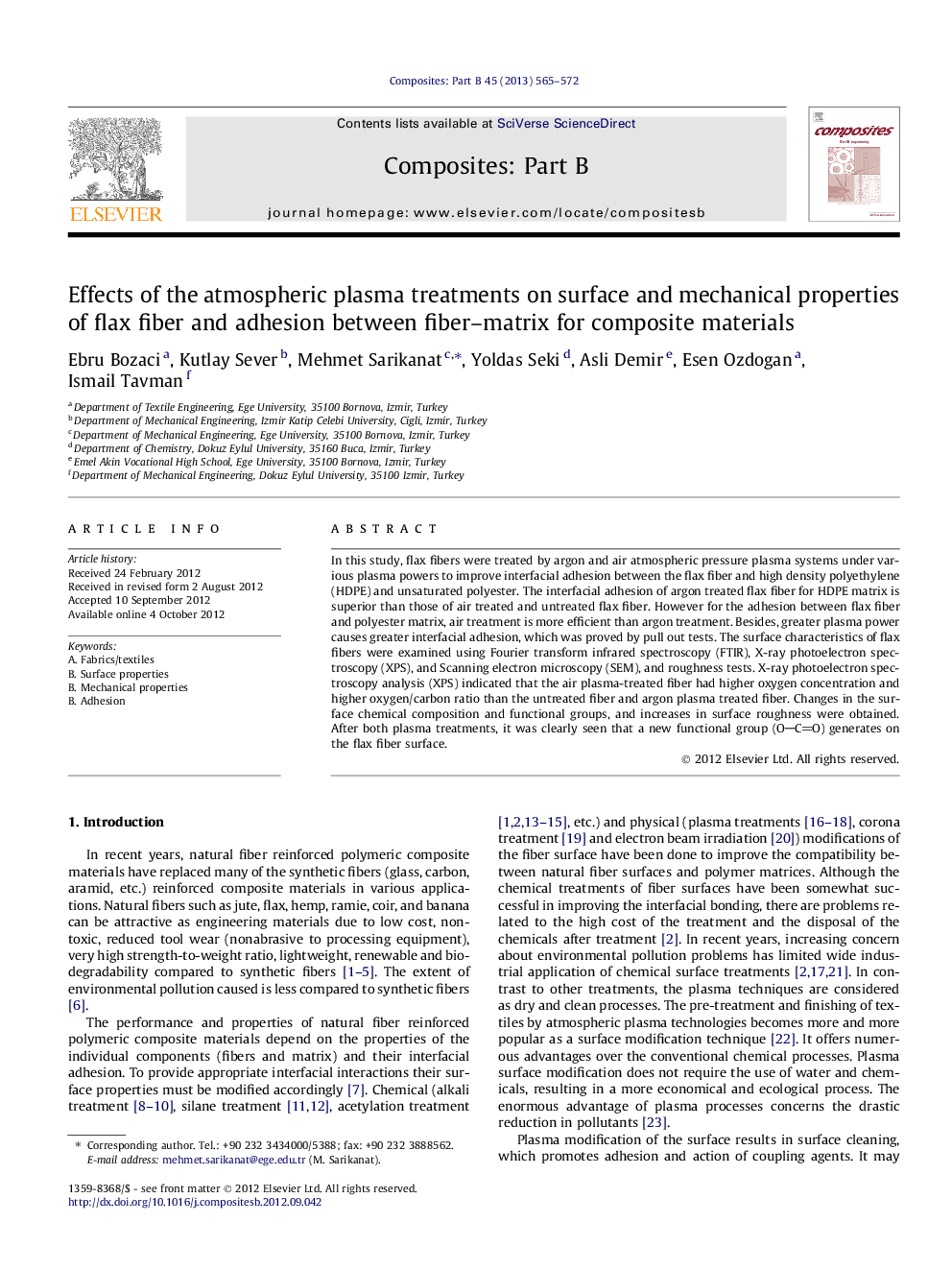| Article ID | Journal | Published Year | Pages | File Type |
|---|---|---|---|---|
| 818924 | Composites Part B: Engineering | 2013 | 8 Pages |
In this study, flax fibers were treated by argon and air atmospheric pressure plasma systems under various plasma powers to improve interfacial adhesion between the flax fiber and high density polyethylene (HDPE) and unsaturated polyester. The interfacial adhesion of argon treated flax fiber for HDPE matrix is superior than those of air treated and untreated flax fiber. However for the adhesion between flax fiber and polyester matrix, air treatment is more efficient than argon treatment. Besides, greater plasma power causes greater interfacial adhesion, which was proved by pull out tests. The surface characteristics of flax fibers were examined using Fourier transform infrared spectroscopy (FTIR), X-ray photoelectron spectroscopy (XPS), and Scanning electron microscopy (SEM), and roughness tests. X-ray photoelectron spectroscopy analysis (XPS) indicated that the air plasma-treated fiber had higher oxygen concentration and higher oxygen/carbon ratio than the untreated fiber and argon plasma treated fiber. Changes in the surface chemical composition and functional groups, and increases in surface roughness were obtained. After both plasma treatments, it was clearly seen that a new functional group (OCO) generates on the flax fiber surface.
